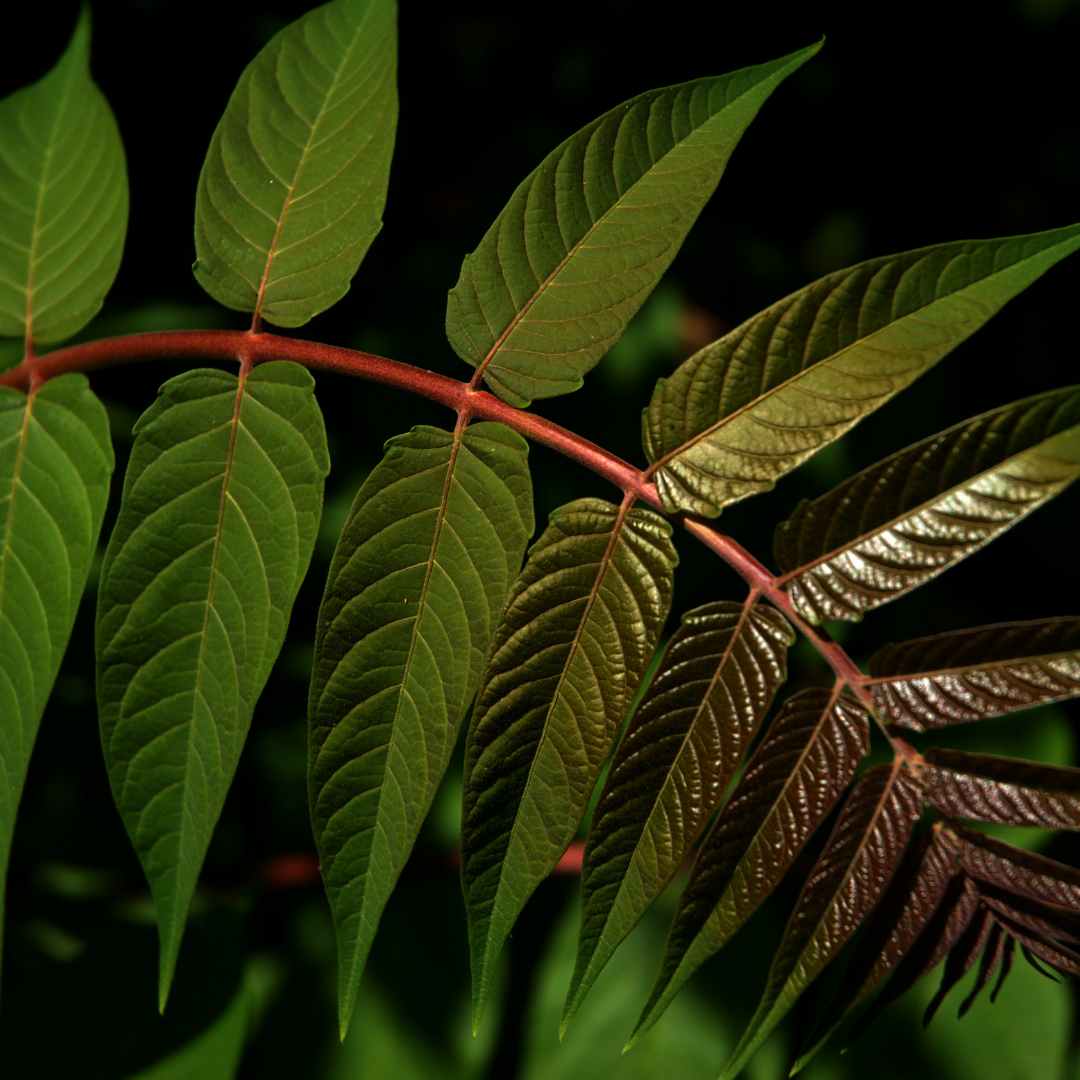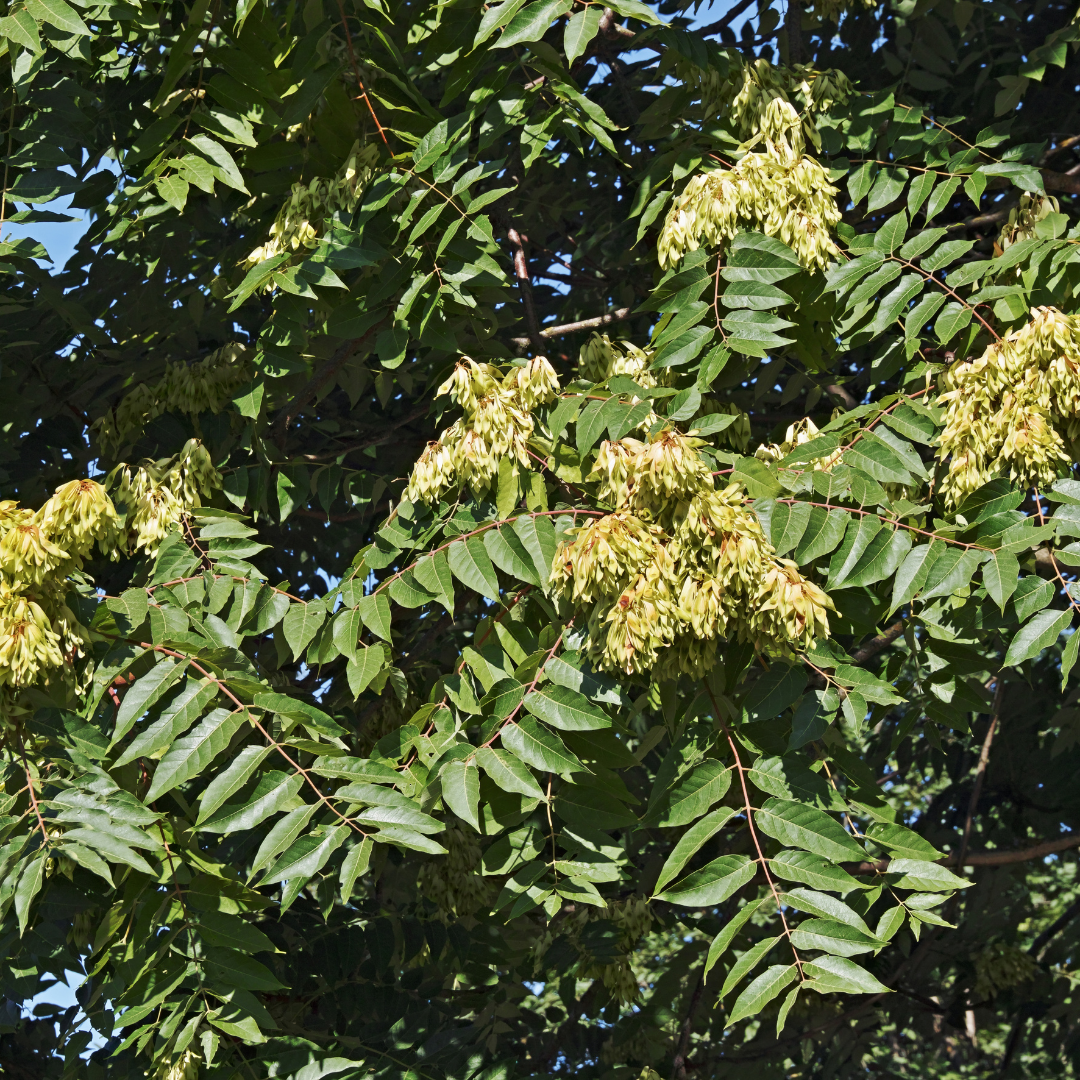Blog
The Ailment of Alianthus...

by Carolyn Ramseur, Conservation Apprentice
… Alianthus altissima that is. Commonly referred to as Tree of Heaven, this persistent species is anything but heavenly for our native landscapes.
Tree of Heaven’s original home is within the forests of China. In its native habitat it is a gracious host to silkworms and a multitude of other organisms, but here in the United States its beneficial role in the ecosystem is lost. Instead of supporting life by being a host to wildlife, Tree of Heaven decreases biodiversity by quickly monopolizing resources.
Tree of Heaven was first introduced into the U.S. by way of Europe in 1784, where it had quickly become popular as a fast-growing, ornamental shade tree, used by amateur and professional horticulturists alike.
After heavy seed trading and dispersion by the U.S.D.A (who inadvertently brought in several non-native, turned invasive, plants to the US by the 1920s), Tree of Heaven quickly became a staple in urban centers, recovering forests, and abandoned areas.

What does this mean and why should any of us be concerned?
If you love seeing wildlife gorge on acorns or enjoy sap from maple trees, you will be severely disappointed hiking in a forest with Tree of Heaven! Growing at a rate of 3 to 4 feet a year, Tree of Heaven quickly shades out native oaks, maples, and other wildlife promoting vegetation (pawpaws, spicebush, you name it).
Those not shaded by Tree of Heaven may be victim to allelopathic* chemicals that are emitted from the roots and decomposing leaves of the plant. Over the course of a few years, a native grassland or young forest could succumb to invasion by Tree of Heaven and exhibit significant loss in habitat quality for migratory birds, over wintering insects, pollinators, and small mammals.
Take care of our native habitats and urban centers by learning how to identify the Tree of Heaven and how to remove it by watching the Penn State Extension Identification Video linked below.
The familiar leaves are bi-pinnately compound, with smooth edges on the individual leaflets, and a notch at the base that looks like a winter mitten. Be careful not to confuse this pest with our native Sumac trees or Black Walnuts (similar compound leaves).
Not sure if what you have is a Tree of Heaven? When in doubt—sniff it out! Tree of Heaven is notorious for having a pungent ‘burnt or rancid peanut butter’ fragrance to the flowers, stems, and leaves (when crushed/broken). That odor is quite the confirmation that the plant in front of you is out of place.
*Allelopathic - the chemical inhibition of one plant (or other organism) by another, due to the release into the environment of substances acting as germination or growth inhibitors.